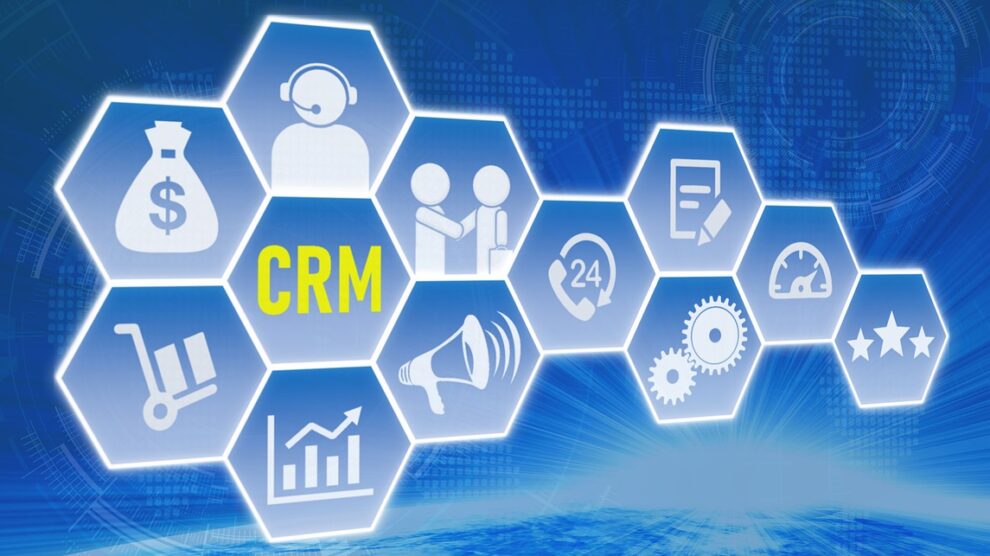Your existing customer base is one of your richest sources of profitability, scalability, and positive brand reputation. One surefire way to strengthen your bond with your most loyal and long-term buyers is through a customer nurturing plan that includes cross-selling and upselling. And no tech tool in your marcom stack will be more useful for those activities than your customer relationship management (CRM) software.
Before diving into the best ways to leverage your CRM during cross-selling and upselling, let’s discuss what those terms mean. Even seasoned sales professionals and business leaders have difficulty distinguishing the nuances between them.
Cross-Selling Versus Upselling: Similarities and Differences
In cross-selling, you are attempting to encourage customers to purchase products or services that are natural “fits” with what they’ve already bought. In upselling, you’re trying to get a buyer to add more features or benefits to a product or service. Cross-selling sells things that are “adjacent” to one another, whereas upselling sells something with more “bells and whistles.”
For example, you run an e-store and sell bicycles and cycling equipment. A customer wants to buy one of your mid-priced bikes. You might get customers to invest in complementary merchandise like a bike helmet or bike hitch through cross-selling techniques. If you were more focused on upselling, you could present the customer with the option of upgrading the bike to one with more gears or made from higher-end materials.
As you can see, the main point of cross-selling and upselling isn’t just to get your company additional dollars. It’s to be more valuable to customers by providing them with all their choices. However, there’s little doubt that both methods can help you achieve your sales goals. As a Hubspot survey from 2022 showed, 72% of sales experts admitted that up to 30% of their business’s income came from upselling. The figures for cross-selling were almost identical.
Where Does a CRM Fit In When Cross-Selling and Upselling?
The interesting part is using your CRM to make cross-selling and upselling more powerful. What’s a CRM? From a basic level, a CRM is a centralized system that (ideally) should contain all available customer information. From a customer’s past purchases to an email address, every buyer should be accessible to you within your CRM.
This makes your CRM a goldmine of customer data, and each piece of data could be the key to helping you realize your company’s cross-selling and upselling plan. Below are a few easy ways to proactively, pragmatically, and effectively leverage your CRM to assist your upcoming sales efforts.
1. Divide Your Buyers into Customer Segments
With a CRM, you’ll find it easier to develop customer segments based on their past purchases. For instance, pretend you sell a subscription service. You might group everyone who signed up for your most basic subscription in the past year. Then, you could send special texts, emails, and other special messages to upsell them to move to your next subscription level. Some won’t, but others will jump at the chance, especially if they’ve enjoyed their experience so far.
There’s no limit to the number or type of customer segments you can construct from your CRM, so use your imagination. Don’t forget that some customers may fall into several categories. Therefore, you may want to cross-reference customers and remove them so the same people aren’t being over-bombarded by your sales and marketing outreach.
2. Deploy Cross-selling and Upselling Messages when Buyer Interest Is Strongest
Your CRM should be able to tell you exactly when consumers have made purchases. Depending on what they bought, you can time cross-selling and upselling messages to those individuals. For example:
- If a customer just purchased a new laptop, you could email them with a discount on a laptop bag or carrying case.
- If a customer just subscribed to your monthly newsletter, you could send them a special offer on a related product or service.
- If a customer just abandoned their shopping cart, you could send them a reminder email with a special offer to get them to complete their purchase.
Feel free to experiment with this kind of cross-selling or upselling campaign. And remember that different customer segments may have different “hot button” moments when they’re most ready to try something else you offer.
3. Engineer a Unique, Branded Rewards Program
Rewards and members-only programs can be enticing ways to keep customers coming back. Typically, these programs offer customers exclusive opportunities or even prizes. From digital (or real) crystal trophies to short-term, high-impact coupons, anything can be used to say, “Thanks for being part of our club.”
How do you get customers to become rewards program members so you can cross-sell and upsell them? Generate a list of customers who fit within specific parameters, such as those who bought a certain SKU from your online store. Then, create a rewards program that educates them on other items that might go well with their purchase. Amazon and other retailers do this routinely by showing buyers products they “might be interested in.” However, you’re taking everything a step further by adding some kind of reward to sweeten (and close) the deal.
No matter your industry, you’re probably dealing with heavy competition. This is why you need a cross-selling and upselling plan that makes the most of your CRM. That way, you can improve your bottom line, customer satisfaction ratings, and ability to keep customers for the long haul.





